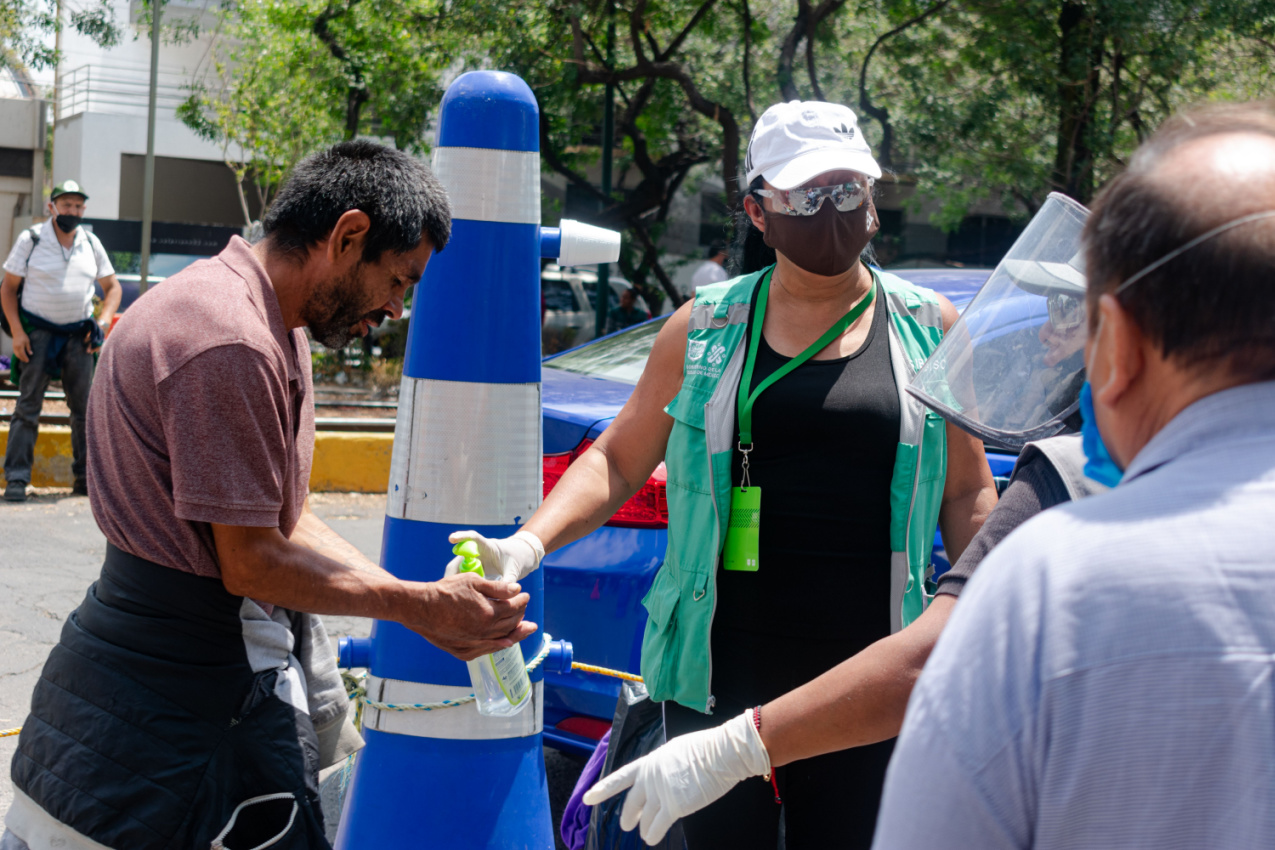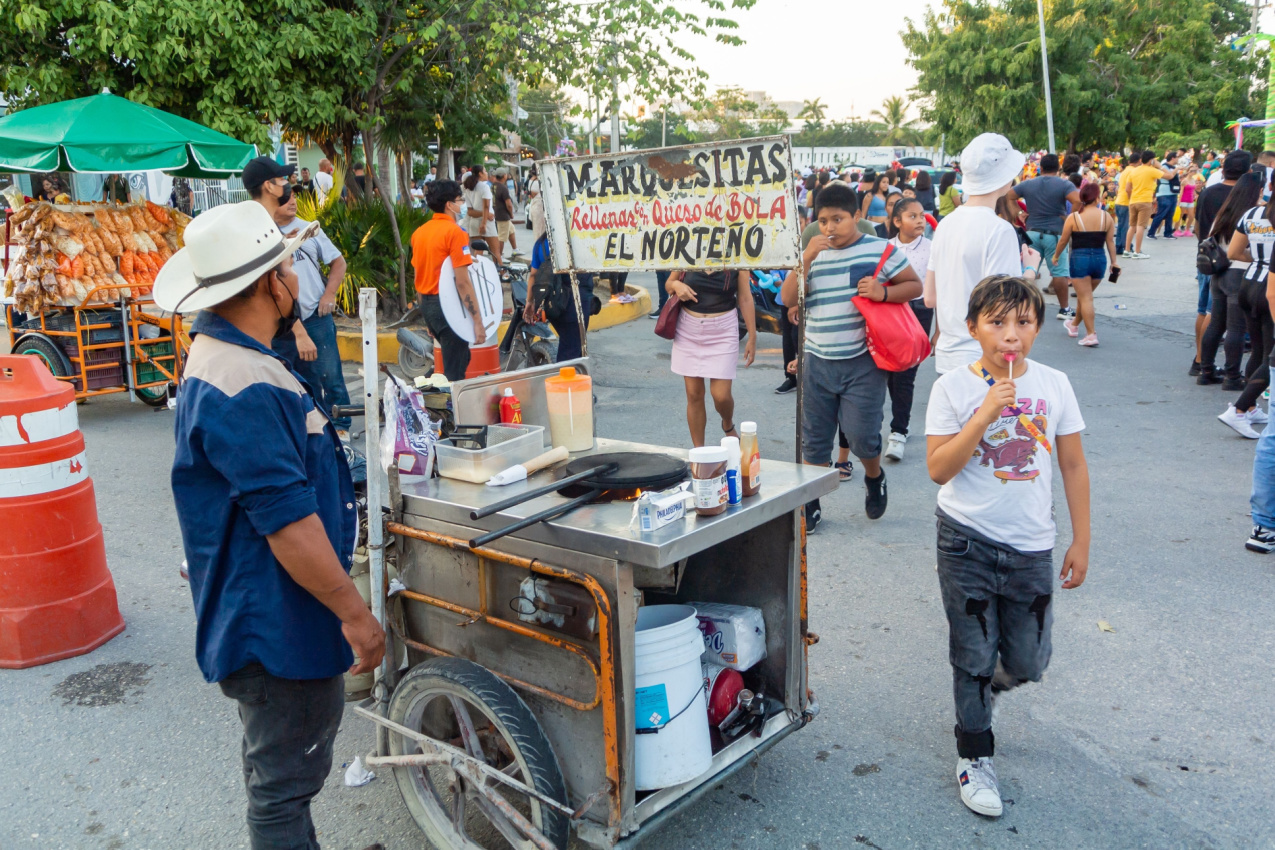Welcome to our wonderful tour of Mexico! Today, we’ll be answering a question of paramount importance: how safe is Mexico for travel in 2024?
The short answer is many tourists are perfectly safe when traveling to Mexico because they follow safety instructions and book a trip to some of Mexico’s safest cities.
However, Mexico is also home to some of the world’s most violent cities, and these places cast a shadow over Mexico’s vibrant beauty. That’s why the U.S. Embassy advises travelers to exercise extreme caution when traveling to this land.
This article will reveal just how diligent you need to be when booking a trip to Mexico. We’ll discuss Mexico’s crime statistics, COVID-19 precautions, potential natural disasters, carbon monoxide awareness and prevention, beach safety, and Mexico’s weather, and share some advice for solo or family travelers.
Keep reading to ensure you’re well-informed and well-prepared before traveling.
Are you planning a last minute trip to Mexico City? We’ve put together all the resources you’ll need for a fun & safe travel:
🛌 Best & Safest Places to Stay in Mexico City:
👉 Hotel Posada del Hidalgol – Outdoor swimming pool, Bar, Free Parking
👉 La Casa de los Patios Hotel – Spa and wellness centre, Family rooms, Restaurant
👉 Hotel Hacienda Vista Hermosa – Facilities for disabled guests, Free WiFi, Bar
👉 Hotel Mio Vallarta – Outdoor swimming pool, Free WiFi, Non-smoking rooms
⛱️ Fun Activities & Tours in Mexico City:
👉 Teotihuacan, Guadalupe Shrine, Tlatelolco & Tequila Tasting Tour
👉 Hot Air Balloon Flight
👉 Historic Downtown Tour
🚗 Best & Safest Mexico City Transportation Services:
👉 Airport Pickup Service – Welcome Pickups
👉 Rent a Car – DiscoverCars
🙏 Stay Safe While Travelling:
👉 Safetywing (for medical insurance)
👉 VisitorsCoverage (for trip insurance)
Unveiling the Reality: A Comprehensive Look at Mexico’s Crime Rates
Crime can happen everywhere in Mexico, including major tourist areas. Travelers should maintain high situational awareness, avoid regions where illegal activities occur, and leave potentially dangerous situations as soon as possible.
Mexican States That You Shouldn’t Travel To
The U.S. Embassy has issued a travel warning, advising travelers not to travel to the following six states in Mexico:
- Colima
- Michoacán
- Guerrero
- Tamaulipas
- Sinaloa
- Zacatecas
The six states have high rates of violence. Never visit or pass through these states for your protection and the safety of those with you.
Mexican States That You Should Reconsider Visiting
The U.S. Embassy warns tourists to reconsider traveling to the following states of Mexico:
- Baja California
- Jalisco
- Sonora
- Durango
- Chihuahua
- Guanajuato
- Morelos
Although not as violent as the previous six states, these seven areas are also targets of criminal activity. As a result, the State Department recommends travelers to rethink their plans if planning a vacation here.
Mexican States to Exercise Increased Caution While Travelling
The U.S. Embassy advises visitors to be extremely conscious when visiting the following Mexican states:
- Aguascalientes
- Veracruz
- Baja California Sur
- Tabasco
- Chiapas
- San Luis Potosi
- Coahuila
- Hidalgo
- Quintana Roo
- Mexico City
- Nuevo Leon
- Nayarit
- Oaxaca
- Queretaro
- Puebla
- Tlaxcala
According to the US Government, tourists can travel to these states but should exercise extreme caution because violence and criminal behavior can happen anywhere at any moment.
The U.S. Department lists all the safety precautions you must take when traveling to these areas. You can find them under the “If you decide to travel to Mexico” section of the Mexico Travel Advisory and the “Safety & Security” section of the Country Information Page.
Mexico’s Safest Places to Visit
The U.S. Department names the following two states as the safest for travel:
- Campeche
- Yucatán
Due to these cities’ extremely low crime rates, the U.S. Department suggests taking standard precautions when visiting these states. So these are the ones you should aim for!
Taking normal precautions includes avoiding walking at night, drinking responsibly, protecting your belongings, refusing offers from strangers, and letting those back home know about your travel plans—very casual things we should practice everywhere.
Navigating the New Normal: Ensuring COVID-19 Safety in Mexico

Mexico doesn’t require a negative COVID-19 test for entry.
Passengers and flight crew members landing in Mexican airports may be checked for temperature, and those who show possible symptoms of the virus may be further examined or placed in quarantine. The same goes for anyone entering Mexico by land.
If you want to take a test for COVID-19, many hospitals, clinics, and laboratories in Mexico provide private testing. PCR tests usually cost between 950 and 4500 MXN ($53 and $250), while viral antigen tests typically cost between 200 and 1000 MXN ($11 and $55).
To prevent the spread of COVID-19, the Mexican government advises people to keep social distancing and clean their hands frequently, among other things.
The American Red Cross prepared a list of all the precautions you should take to ensure a healthy and safe trip to Mexico.
Perils of Nature: The Risk of Natural Disasters in Mexico
Mexico is threatened by three natural forces: hurricanes, earthquakes, and volcanic eruptions.
Hurricane Information and Precautions
In Mexico, the hurricane season typically lasts from June to November and can strike Pacific and Atlantic coasts.
Follow the US National Hurricane Center for weather updates in Mexico, and check with the local government or tour operator to see if hurricanes could affect your travel arrangements.
Earthquake and Tsunami Information and Precautions
The states of Oaxaca and Guerrero are very prone to earthquakes. The Federal Emergency Management Agency of the United States contains information on what to undertake before, throughout, and after an earthquake or tsunami.
Bonus Tip: You can also download the 911 CDMX app on your smartphone to receive an earthquake warning 60 seconds before it hits.
Volcanic Eruptions Information and Precautions
Mexico is home to 36 volcanoes, 12 of which are active and inaccessible to the public. For example, the Popocatepetl volcano last erupted in June 2022.
Visit the Mexican Disaster Prevention Centre’s website for the most recent reports on volcanic eruptions.
Breathing Safely in Mexico: Carbon Monoxide Awareness and Prevention
Because gas is utilized in so many household appliances, we must keep an eye out for incidents involving it.
Carbon monoxide poisoning is one of the most pernicious consequences of a gas leak. It happens rapidly without anyone noticing, ending fatally or with serious medical consequences.
Such a horrible incident occurred in Mexico City in November 2022 when three American visitors died from carbon monoxide poisoning while staying in an Airbnb.
The silver lining is that while CO poisoning can be deadly, it’s entirely avoidable. When arranging your vacation in Mexico, ensure that your unit includes at least one CO detector. It’s also a good idea to have a backup detector on hand just in case one of the detector’s batteries dies.
Carbon monoxide poisoning symptoms include nausea, headache, vomiting, and shortness of breath.
Serenity by the Shore: The Safety of Mexico’s Beaches
Various beaches in Mexico are unsafe for tourists due to the presence of crime, bacteria in the water, and deadly animals.
For instance, three Acapulco beaches measured high levels of bacteria in the water last year. Cancun, in Quintana Roo, has some resorts garnering headlines for violent crimes and the presence of sharks. Manzanillo beaches are also unsafe—the police are often chasing after criminals around the beach, and you may unintentionally stumble upon them in the wrong place at the wrong time.
Apart from these, the rest of Mexico’s beaches are safe and oh-so-beautiful. However, remember that rough waves may pay the coast a visit. So, before entering the ocean, check which type of warning flag the beach has.
Mexico’s beach warning flag system consists of four flags:
- Green Flag: Safe for swimming.
- Yellow Flag: Swim with caution.
- Red Flag: Dangerous.
- Black Flag: Do not swim.
Beach warning signs must always be taken with caution. Never swim alone, and never leave kids unsupervised near water.
Mexico’s Weather Patterns: What to Expect?
Contrary to what many people believe, the temperature is not consistently hot across Mexico. Mexico is a big country, and the weather varies from one place to another.
Let’s start with the seasons. In Mexico, there are two main seasons: dry and wet. May through October is the wet season, and November through April is the dry season.
The wet season is characterized by greater humidity, afternoon showers, and possible hurricanes. On the other hand, sunny days, bright skies, and little rain characterize the dry season.
Mexico’s weather temperatures vary by region. Northern Mexico has a desert climate, with the highest temperature reaching 113°F (45°C) and the average low of 59°F (15°C ).
Central Mexico has a Mediterranean climate. The average high in the summer reaches 86°F (30°C), while the average low in the winter is around 50°F (10°C).
Coastal Mexico has a tropical climate with an average high of 95°F (35°C) and an average low of 77°F (25°C).
The Mountainous region of Mexico has a highland climate. The highest summer temperature can reach up to 86°F (30°C), whereas the winder can get as low as 50°F (10°C).
A rainforest climate characterizes the Southern region of Mexico. The hottest summer days can reach up to 95°F (35°C), whereas the coldest winter days can be as low as 68°F (20°C).
When Is the Best Time to Visit Mexico?
The best time to visit Mexico depends on your preferred activities and desired weather.
The dry season is ideal if you want dry, warm temperatures for beach activities and outdoor adventures.
However, traveling during the rainy season has certain advantages if you don’t mind the occasional rainstorm. The scenery is lusher and greener, the temperatures are more pleasant, and there are fewer tourists and lower traveling expenses.
Exploring Mexico Solo or With a Family: Is It a Good Idea?

If you follow the Mexico Travel Advisory’s advice and stay away from areas with high rates of crime and violence, you can visit Mexico as a solo traveler or go with your family on a bit of a getaway vacation.
Here are some things to keep in mind while enjoying your vacation in Mexico.
Essential tips for staying safe:
- Learn some basic Spanish, as it will help you blend in more efficiently
- “Uber” and “DiDi” are two great taxi options
- Avoid waving at random cabs on the street
- Purchase a Mexican SIM card
- Be familiar with the emergency numbers, 911 for police, 066 for ambulances, and 080 for fire services
- Make sure you book your stay in reputable hotels, hostels, apartments, or guesthouses
Tips for traveling alone:
- Dress discreetly and avoid wearing costly jewelry or makeup, especially if you’re a female solo traveler
- Never walk alone at night
- Keep an eye on your drink and avoid getting drunk
- Be wary of your surroundings. If you have a bad feeling about a person or a place, avoid it
- Ignore catcallers, especially if you are a solo female traveler. They can become aggressive after any kind of reaction (even an eye roll)
- Inform someone close to you, such as a friend or family member back home, of your travel plans and what you want to do throughout the day
- Don’t accept offers or illegal substances from random people
- Don’t carry too much cash on you, leave some in your hotel or apartment
Tips for traveling with your family:
- Explore your traveling destination as a whole group and never separate
- Never leave your children unsupervised, especially in the water
- Be responsible, don’t drink or stay very late at bars or restaurants
- Bring a medical kit with you
- Rent a car rather than traveling with taxis
Travelers should always take safety precautions when visiting Mexico and anywhere in the world. Therefore, use caution, but also remember to keep an open mind, respect the culture of the place you’re visiting, and take advantage of the beautiful things the nation has to offer!
Conclusion
In conclusion, Mexico can be a safe place to visit with plenty to offer tourists, solo and family travelers included!
Yes, Mexico has a bad rep, but let’s end our Mexico safety guide on a good note: stop paying attention to and trusting everything you read online, especially if it comes from someone who hasn’t visited it.
While writing this guide, we stumbled upon hundreds of articles and videos from tourists sharing their experiences in Mexico, and they’ve highlighted that while there, they’ve never felt safer!
Nevertheless, feeling safe does not mean ignoring the reality that you are traveling to a foreign country with very different cultural norms, mentalities, and perspectives. As a traveler, you must adjust to that setting, not the other way around!
As parting advice, ask fellow travelers who have visited this enthralling country about their experience there and follow the safety recommendations we outlined in this article. Good luck, and have a wonderful and safe trip to Mexico!



